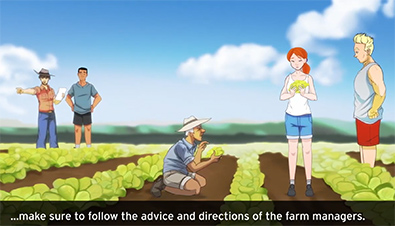Read the latest information on
Foot-and-mouth disease
 Transient workers are a crucial part of the workforce for many farm businesses, but bringing workers onto your farm – from overseas or other parts of your state or Australia – who move around the country in search of work may also bring diseases, pests and weed seeds with them.
Transient workers are a crucial part of the workforce for many farm businesses, but bringing workers onto your farm – from overseas or other parts of your state or Australia – who move around the country in search of work may also bring diseases, pests and weed seeds with them.
With people being allowed to travel around more within states or territories, and possibly even interstate before too long as COVID-19 restrictions are eased, more transient workers might be in search of work on farms.
To help address these risks, a video and fact sheet in nine languages have been developed for use in staff induction or training sessions. They can also be shared with potential workers before they even arrive on farm, so they have an idea what to expect when they get there.
There are two versions in English (short and long), as well as voice over and subtitle translations in Bislama, French, Khmer, Korean, Mandarin (simplified), Tetum, Tongan and Vietnamese.
The simple video is an introduction to the idea of on-farm biosecurity and covers some of the most important and effective hygiene practices to minimise the spread of diseases, pests and weed seeds. After workers view the video or read the fact sheet, you can provide more information about the specific biosecurity measures used on your farm when they arrive.
You could also do other producers a favour and ask workers to watch the videos and do a few things to clean up before they leave your property.
The videos are available as a playlist on the FarmBiosecurity YouTube channel, on the Videos page of the Farm Biosecurity website, and the Working on farm page on the Australian Interstate Quarantine website.
An accompanying fact sheet summarising the information in the video can be downloaded here. This fact sheet is also available in Bislama, Chinese (Simplified), French, Khmer, Korean, Tetum, Tongan, and Vietnamese.
These resources were developed by Plant Health Australia with support from the Australian Government Department of Agriculture, Water and the Environment.